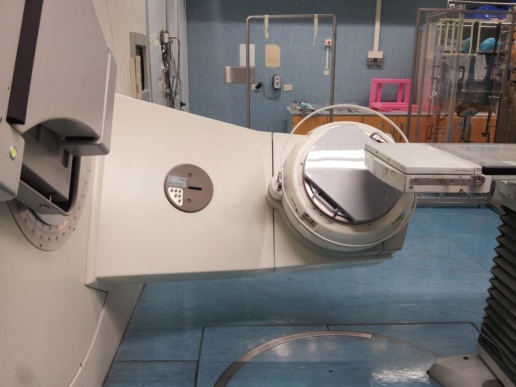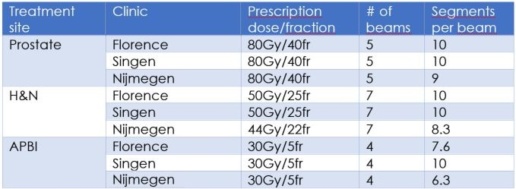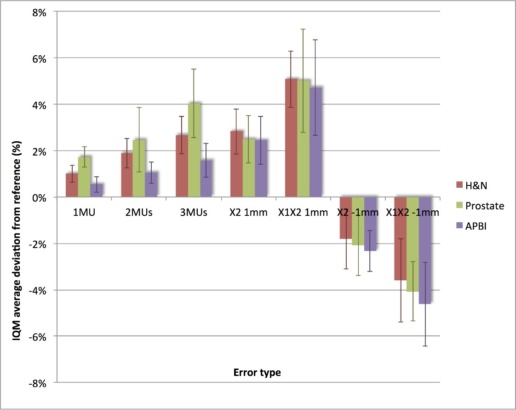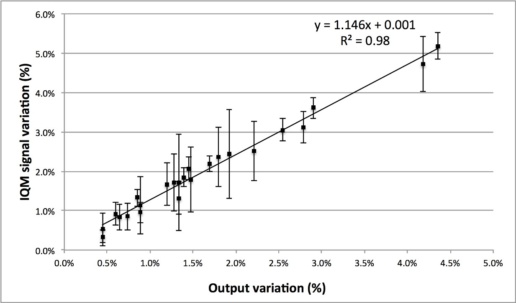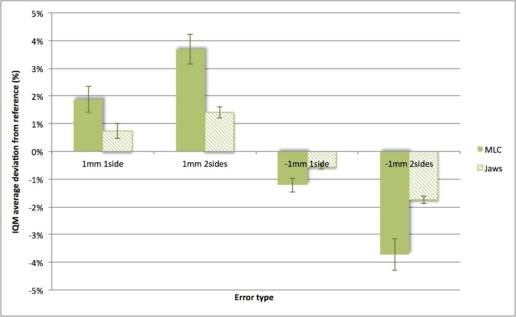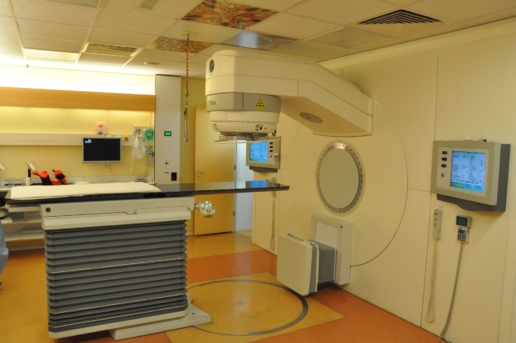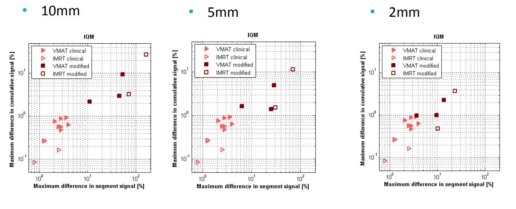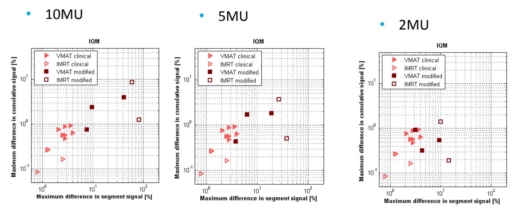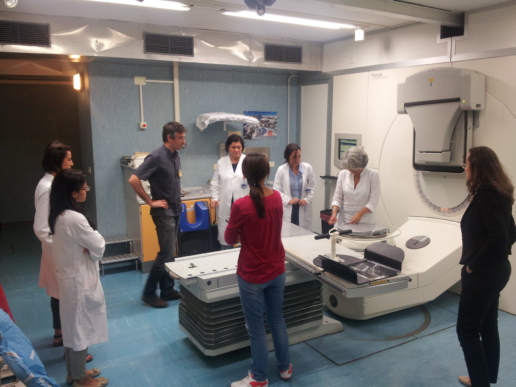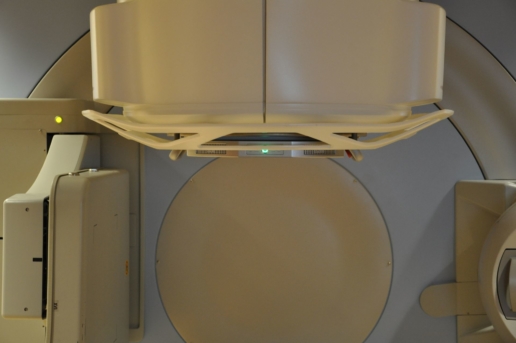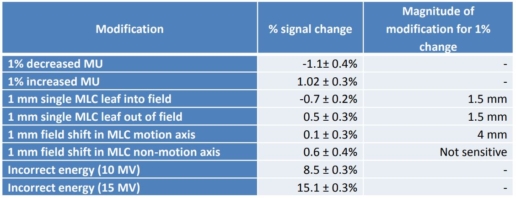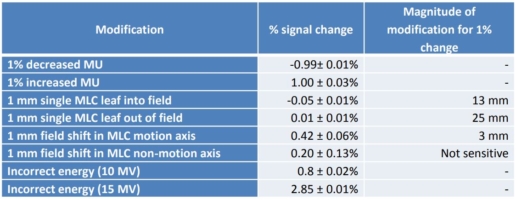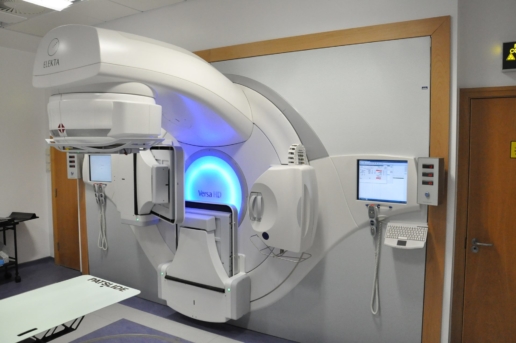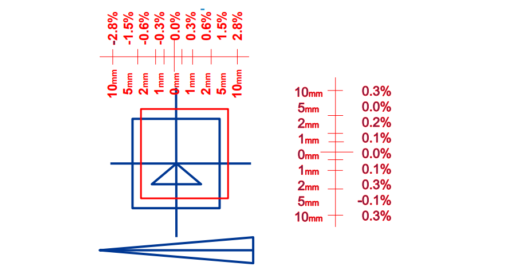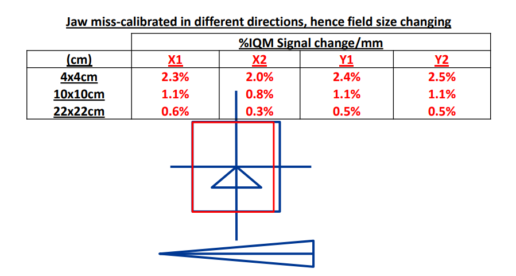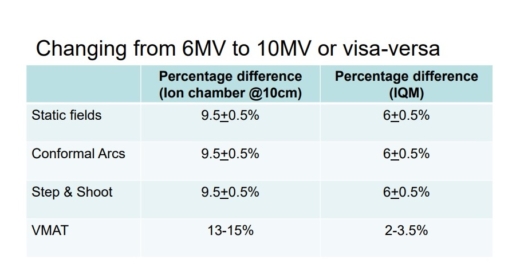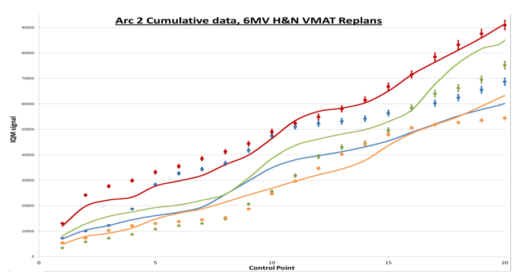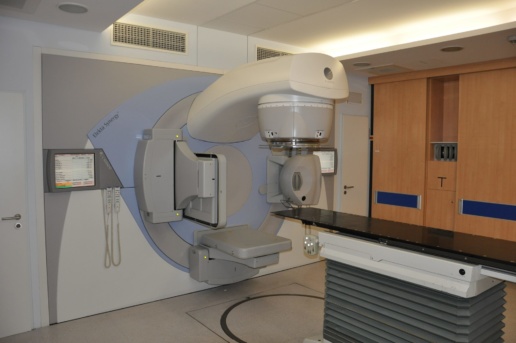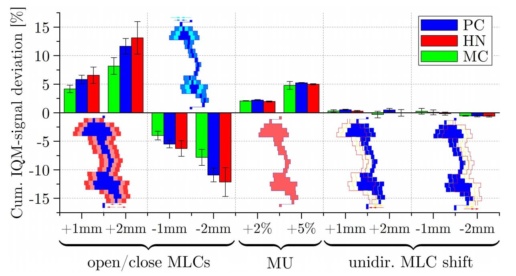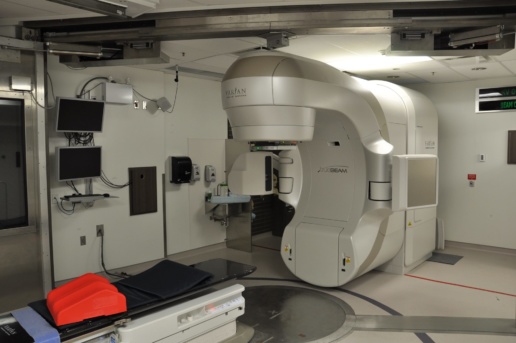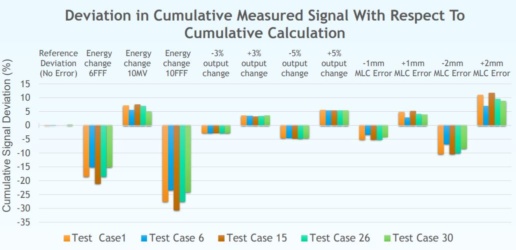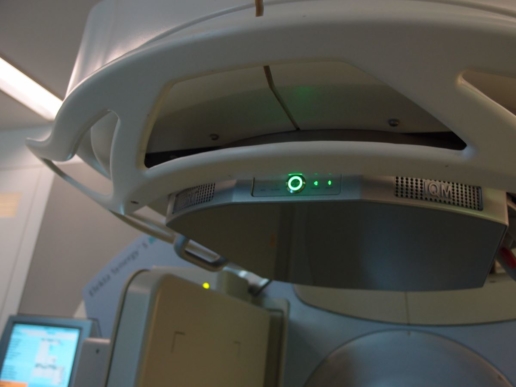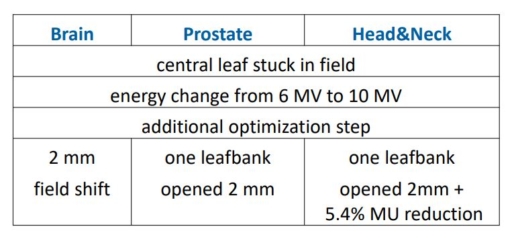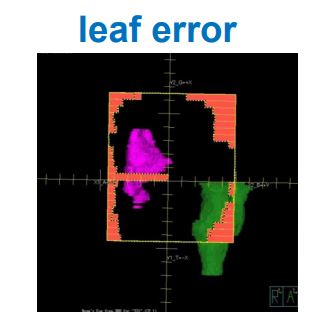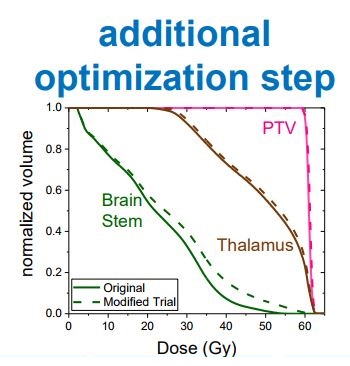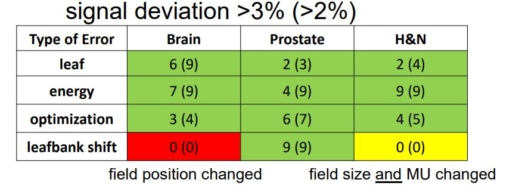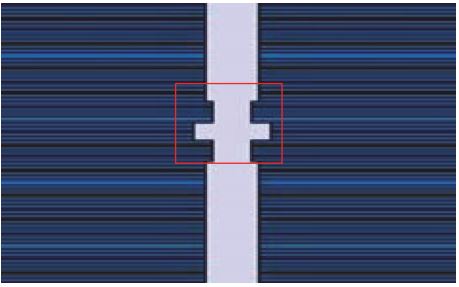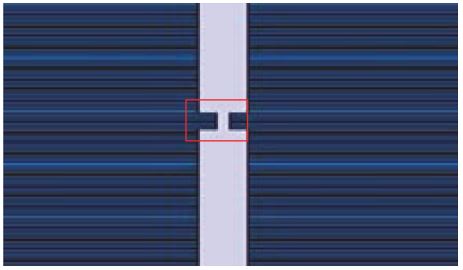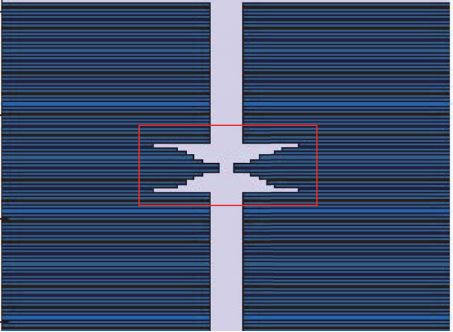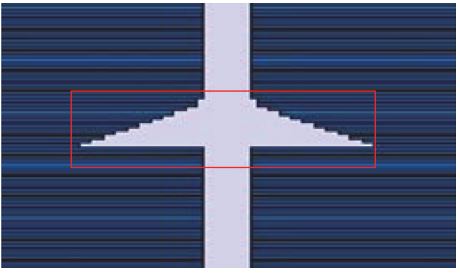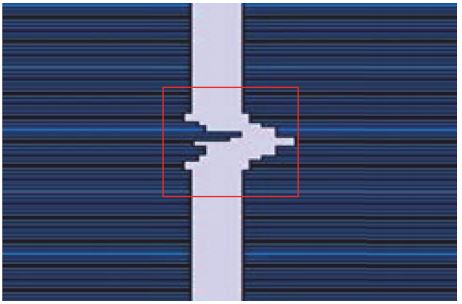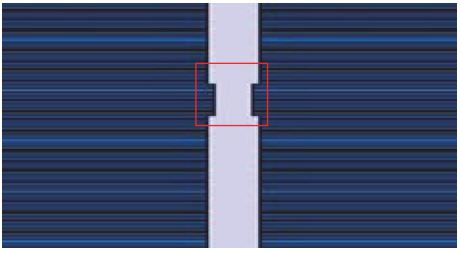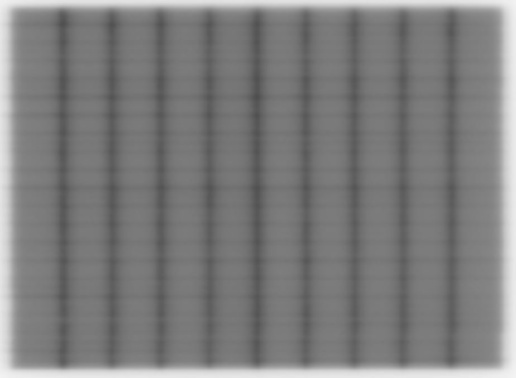Error detection sensitivity
Test purpose
This multi-centre study aimed to test the IQM system’s ability to detect small delivery errors in IMRT plans.
Test method
The researchers introduced 7 types of errors in 9 clinical step-and-shoot IMRT plans, by modifying the number of MUs and introducing small deviations in leaf positions. They delivered the original and modified plans and recorded the detector signal variations.
Each centre selected a patient case for each of 3 anatomical sites, and generated 8 plans for each patient: an “error free” (EF) plan and 7 “error induced” (EI) plans.
In total, the team delivered and measured 72 plans with the IQM system. They calculated dose distributions for each EF and EI plan, and determined each EI plan’s percentage variation with respect to the original EF dose distribution. They then compared the variation in the dose distributions to the corresponding variations in the recorded IQM signals for the EF and EI plans.
Test results
The IQM system proved to be very sensitive in detecting delivery errors. Increasing the linac output by 1MU caused a signal increase (average±1sd) of 1.0%±0.4% in the H&N cases, 1.7%±0.4% in the prostate cases and 0.5%±0.3% in the APBI cases.. The following graph shows the magnitude of signal variation detected for the seven induced errors and clearly shows that increasing dose output deviations or MLC shifts in the EI plans resulted in greater deviations between EI and EF signals.
The next graph plots IQM average signal variation from reference (%) versus output variation from reference (%) for the three errors introduced on MUs for the 3 treatment sites. IQM signal correlates linearly with output.
The next graph presents an extension of the test that evaluated the IQM system’s sensitivity in detecting errors induced in the collimator jaws, orthogonal to the detector gradient. The induced MLC leaf bank position errors were repeated as collimator position errors for a prostate patient.
IQM is shown to be sensitive to positional variations in the orthogonal direction with respect to gradient, although the sensitivity is, on average, 1.5% less than for positional variation in the detector gradient direction.
Conclusion
The IQM detector is capable of detecting small delivery errors in MU and MLC leaf position and shows a high sensitivity for clinical practice.
This test report is based on a publication created by Careggi University Hospital Florence (Italy).
Please click on the „More information“ link to access the publication website.
Error detection
Test purpose
Evaluate the error detection capability of the IQM System.
Test method
A variety of clinical treatment plans consisting of head & neck VMAT and IMRT cases, a larynx VMAT, a lung VMAT as well as a stereotactic lung technique were evaluated.
A number of errors were introduced at different times during the beam delivery. These errors included single segment retraction of leaves, dose changes of 10MU, 5MU and 2MU.
Test results
IQM was able to detect small errors in beam delivery with respect to a pre-calculated beam. All errors were detected without any user interaction.
Conclusion
IQM does an excellent job in real-time monitoring of beam delivery.
Sensitivity and specificity can be expected to be sufficient for clinical
practice.
Error detection sensitivity
Test purpose
Test the error detection sensitivity of the IQM System.
Test method
Errors were induced to an head & neck IMRT treatment composed by seven beams (gantry angles = 0°, 40°, 80°, 140°, 220°, 280°, 320°) generating five new treatments. Errors were induced modifying the number of delivered MU (between 1 MU and 3 MUs) and by introducing small deviations in leaf positions for each segment of each beam (mimicking an MLC bank error).
Conclusion
IQM is capable of detecting small errors in MU and leaf positions. The error sensitivity is sufficient for clinical practice.
This test report is based on a publication created by University of Florence, Florence (Italy).
Please click on the „Download“ button to download the complete publication.
Error sensitivity evaluation
Test purpose
Quantify how sensitive the device is to beam delivery errors.
Test method
Various errors were introduced into a 10 cm x 10 cm beam as well as in a 1 cm x 1 cm beam. These errors included 1% change in MUs, 1 mm single leaf motion, 1 mm field size shift and energy changes.
Test results
Modifications to the photon beams resulted in changed IQM signal. The simulated errors were detected in 6 MV 10 cm × 10 cm photon beam. Twice the SD of the stability (1%) of the measurement was considered a “detected” error. For small fields (SBRT) the non-finite detector resolution changes the detectable errors. Simulated errors were detected in 6 MV 1 cm × 1 cm photon beam.
Conclusion
The IQM System demonstrates sufficient stability for online delivery quality assurance measurements and sufficient sensitivity for all simulated beam delivery errors.
This test report is based on a publication created by UC Davis, Sacramento (USA).
Please click on the „More information“ link to access the publication website.
Error detection capability
Test purpose
Evaluate the error detection capability of the IQM System.
Test method
The influence of a variety of errors on the IQM signal was evaluated. The introduced errors included incorrect positioning of the beam, incorrect calibration of the MLC, wrong treatment beam energy and application of wrong treatment plan.
Test results
The IQM signal changed significantly for every introduced error. Moving the treatment beam changed the IQM signal between 0.3% and 2.8%. Moving a jaw changed the IQM signal up to 2.5%. Changing the energy on different treatment technique changed the IQM signal up to 9.5%. Delivering the incorrect plan (even when Patient Name and ID are the same) is detected before the 5th control point.
Conclusion
The IQM is stable, reliable & easy to use. IQM can identify:
- Incorrect MUs & Energy
- Shifts in the gradient direction
- Significant MLC miscalibration
- Incorrect plans
This test report is based on a publication created by The Christie, Manchester (UK).
Please click on the „Download“ button to download the complete publication.
Error detection sensitivity
Test purpose
Evaluate the error sensitivity of the IQM system.
Test method
15 VMAT plans (5 prostate, 5 breast and 5 Head & Neck) were evaluated. A variety of clinically relevant errors were introduced into a VMAT plan. Single segments were modified with single leaf bank errors of +1mm, dual leaf bank errors of 1mm and 2mm, uni-directional shifts of 1mm and 2mm as well as a MU increase of 2% and 5% in a single segment.
Conclusion
IQM shows very good dosimetric properties and error detection sensitivity. IQM can potentially replace the 2D plan verification method.
This test report is based on a publication created by Lake Constance Radiation Oncology Center, Singen/Friedrichshafen (Germany).
Please click on the „Download“ button to download the complete publication.
Error detection capability
Test purpose
Evaluate the error detection capability of the IQM system.
Test method
32 Head & Neck VMAT test fields (with 110 segments each) were calculated using the IQM CALC application, then delivered by a TrueBeam LINAC for 15 fractions over a course of 50 days.
The error detection capability of the IQM system was tested by introducing the following systematic errors into 5 randomly chosen test plans: ±3% and ±5 % change in total MU (simulating machine output change); ±1 mm and ±2 mm change in MLC bank position (simulating calibration error); and energy mix-up from 6MV to 6FFF, 10MV, and 10FFF. The differences in measured and calculated cumulative signals were then quantified.
Conclusion
IQM is capable of detecting 1mm error in MLC bank position, change in machine output by >3%, and any mix-up of beam energy.
This test report is based on a publication created by Princess Margaret Cancer Centre, Toronto (Canada).
Please click on the „Download“ button to download the complete publication.
Induced errors on clinical IMRT cases
Test purpose
Verify the detection capability of the IQM System for a variety of clinically relevant delivery errors.
Test method
3 clinical IMRT plans were modified: Brain, Prostate, Head & Neck. All errors had a clinical effect: DVH parameters of either the targets or organs at risk changed by a few percentages.
Conclusion
IQM showed a very high error detection rate. Using a watch level of 2% and an action level of 3% IQM would have detected all but one of the induced errors.
This test report is based on a publication created by University Clinic, Würzburg (Germany).
Please click on the „Download“ button to download the complete publication.
Sensitivity Analysis of the IQM System Using Monte Carlo Simulation
Test purpose
Evaluation of the IQM sensitivity to errors in segments using EGSnrc/BEAMnrc Monte Carlo (MC) codes.
Test method
Sensitivity analysis (SA) techniques were applied to study the significance of small alterations of the field (segment) sizes on the IQM signal response. One hundred and eighty multi leaf segments were analyzed with methods that included scatter plots (SP), brute force, variance-based (VAR), and standard regression coefficient SA.
The segments were altered randomly within ±1, ±2, and ±3 mm leaf steps for 10 MV photon beams.
Test results
In total, 6 original segments were each altered 30 times randomly with ±1, ±2, and ±3 mm positional errors. For each segment, a Monte Carlo simulation was done to determine the IQM signal. Sensitivity analysis results indicated that the IQM is sensitive to detect these alterations in SA. The sensitivity is more pronounced in small SA.
Conclusion
The sensitivity of the IQM in this study shows its potential to detect small alterations in SA. The SP and VAR relation to SA is approximately constant at large SA but displays power function relationships at smaller SA values. All sensitivity analysis methods employed in this study indicated that the IQM signal (?) will indicate small segments alterations even for the larger segments.
This test report is based on a publication created by University of the Free State, Bloemfontein (South Africa).
Please click on the „Download“ button to download the complete publication.
Picket Fence Test with IQM
Test purpose
Investigation of the error sensitivity of the IQM signal.
Test method
Picket Fence type fields were used to evaluate the sensitivity of the IQM Detector for MLC leaf errors.
A single leaf offset was intentionally introduced during delivery of various Picket Fence fields with segment apertures of 3×1, 5×1, 10×1, and 24x1cm2 .
Both 2mm and 5mm decrease in a single MLC leaf width were used.
Test results
- Statistical analysis indicates that the dosimetric differences detected by IQM were significant (p < 0.05) in all Picket Fence test deliveries.
- The largest average IQM signal response of a 2 mm leaf error was found to be 2.1% and 5.1% by a 5mm leaf error for 3×1 cm2 field size.
- The same error in 24×1 cm2 generates a 0.7% and 1.4% difference in the signal. See above table for detail.
These results were achieved completely automatically by the IQM system simply delivering a treatment plan designed as a picket fence test.
Conclusion
Small MLC leaf error can be detected. The sensitivity is more pronounced for smaller field sizes.
IQM could be beneficial for the verification of stereotactic treatments.
This test report is based on a publication created by Johns Hopkins University, Baltimore (USA).
Please click on the „Download“ button to download the complete publication.
